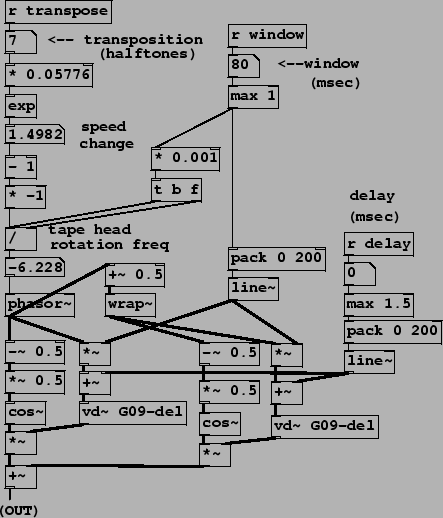 |
Example G09.pitchshift.pd (Figure 7.33) shows a realization of the pitch shifter described in Section 7.9. A delay line (defined and written elsewhere in the patch) is read using two vd~ objects. The delay times vary between a minimum delay (provided as the ``delay" control) and the minimum plus a window size (the ``window" control.)
The desired pitch shift in half-tones (![]() ) is first converted into a
transposition factor
) is first converted into a
transposition factor
Once ![]() is calculated, the production of the two phased sawtooth signals and
the corresponding envelopes parallels exactly that of
the overlapping sample looper (example B10.sampler.overlap.pd, Page
is calculated, the production of the two phased sawtooth signals and
the corresponding envelopes parallels exactly that of
the overlapping sample looper (example B10.sampler.overlap.pd, Page
![]() ). The minimum delay
is added to each of the two sawtooth signals to make delay inputs for the
vd~ objects, whose outputs are multiplied by the corresponding
envelopes and summed.
). The minimum delay
is added to each of the two sawtooth signals to make delay inputs for the
vd~ objects, whose outputs are multiplied by the corresponding
envelopes and summed.